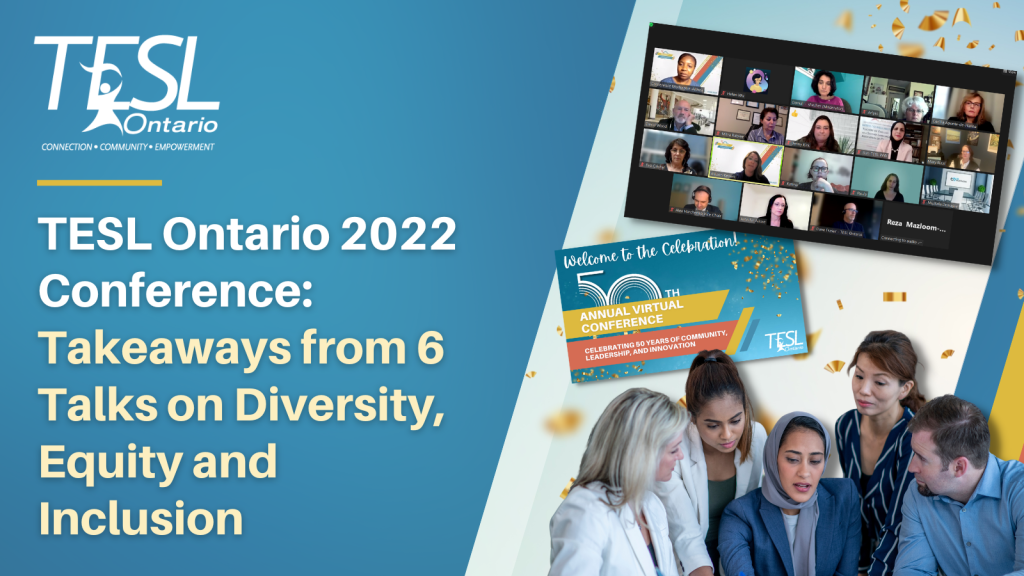Most of us are aware of the importance of the issues around digital accessibility through our own disabilities and supporting our students in virtual and blended classrooms. Some organizations offer accessibility training for educators and learners. Due to accessibility legislation and policies, software vendors build accessibility features into their wares. This opportunity allows us to make our documents more accessible. This post suggests some features available in the Microsoft Word app that instructors may leverage to make their digital documents more accessible. Please be aware that this is not a comprehensive accessibility resource, but an introduction for interested educators. Continue reading
Category Archives: Accessibility
International Students in Canada

Instructors want to help their international students become aware of their rights and of the services that their school offers them. After all, their presence significantly enhances our colleges and universities, benefiting domestic students as well, and contributing to the economy. Unfortunately, many international students do not realize what benefits their schools offer them. To some extent, this may be because of language barriers.
Continue readingTESL Ontario 2022 Conference: Takeaways from 6 Talks on Diversity, Equity and Inclusion
TESL Ontario’s 2022 conference, which marked the organization’s 50th anniversary, brought forth current perspectives, reflections, and suggestions related to diversity, equity, and inclusion. This post highlights takeaways from six talks about fostering inclusion, advancing accessibility, and supporting newcomers.
Continue readingSAMR Says, Part II

SAMR Says
Change is never comfortable, but, as we all know, it is necessary. The SAMR model is flexible and easy to use at all levels of education. To read about ‘Substitution’ and ‘Augmentation,’ please check out SAMR Says, Part I, where we discussed these stages of ‘Enhancement’ and some simple and fast tools you can find to help you move from paper to online without much stress or extra work. Using technology tools that enhance your class, as per the SAMR model, means that you are enhancing yourself, the material, and the students’ experience too.
In this blog, we will be discussing the stages of ‘Transformation’ and how to modify and redefine your approach to allow for more technology in your class.
Continue readingGood Habits for Managing Learning Material

Introduction
Over the past months, thousands of language instructors across Canada have been unwittingly or intentionally taking on instructional developer responsibilities. They have been cobbling together, rearranging, and refining digital resources and activities from various sources to meet the needs of their students. Many instructors have been generating original learning resources to fill in gaps that appear while teaching online.
Usually, learning materials are prepared ‘on-the-fly’ to anticipate or adapt to challenges that arise from our classroom lessons. What happens to these documents? Often, they are forgotten on a computer drive and discovered on a slow day when you are considering which files to remove to free up hard drive space. These files are hastily named, filed, and saved, so they are lost. Sometimes, it is too much trouble to save and properly file a document that is created just before your online class is about to start. If you are currently teaching online, I am sure you will agree with this! Continue reading
#CdnELTchat and #teslONchat Summary with Guest moderator JPB Gerald: Decentring Whiteness in #ELT
Post by Tanya Cowie, Jennifer Chow and Bonnie Nicholas
On May 11, the #CdnELTchat team, along with #teslONchat, welcomed JPB Gerald (@JPBGerald) as our special guest moderator for a live chat on the topic of Decentring Whiteness in #ELT. JPB Gerald is a doctoral candidate in Instructional Leadership. His scholarship focuses on language teaching, racism, and whiteness. Learn more at jpbgerald.com or by listening to the podcast, UnstandardizedE. We can also recommend his article in the BC Teal Journal, Worth the Risk: Decentring Whiteness in English Language Teaching, as well as his most recent co-authored piece (with @ScottStillar and @Vijay_Ramjattan) in Language Magazine, After Whiteness.
Continue readingAdapting lesson plans for online teaching

Awkward silence and staring at the screen while not knowing what happens next are what students may experience during an online session. On the other side, however, the instructor is trying hard to pull up a file for the next activity. You may think naming the activities of the day will do the job, but perhaps a bit of visual aid helps keeping the plan in mind both for the students and teachers. This is where an electronic version of a lesson plan might play a role.
Continue readingCoping with COVID-19 Using Online Instruction

These are unprecedented, uncertain times, and many students and educators are trying to find innovative ways to keep learning and stay engaged. Virtual learning has become an essential tool for many learners and educators, but there’s so much more to it than your traditional discussion boards. Fortunately, our Guest Blogger, John Allan, has created a thorough and informative webinar to share with the ELT community about virtual learning. Coping with COVID-19 Using Online Instruction is now available to TESL Ontario members and the public.
Continue readingKeeping Online Language Learners Engaged
Most of us are teaching our students in online mode. As the weeks pass, learners and instructors will experience emotions associated with their isolation. This will manifest as fatigue, boredom, depression, and apathy. In order to combat these, we, as instructional professionals must rise to the challenge to ensure that learning endures. Our efforts will provide our students with a sense of normalcy and purpose, and routine to make these troubled times less arduous.
Continue readingIndigenous Cultures and EAP Classes

Should we teach Indigenous cultures and other matters concerning Indigenous peoples in our EAP classes? I’ve been reading about this lately. Here are some things I’ve learned.
Continue reading



